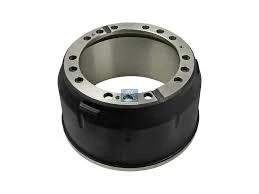
-
 Afrikaans
Afrikaans -
 Albanian
Albanian -
 Amharic
Amharic -
 Arabic
Arabic -
 Armenian
Armenian -
 Azerbaijani
Azerbaijani -
 Basque
Basque -
 Belarusian
Belarusian -
 Bengali
Bengali -
 Bosnian
Bosnian -
 Bulgarian
Bulgarian -
 Catalan
Catalan -
 Cebuano
Cebuano -
 Corsican
Corsican -
 Croatian
Croatian -
 Czech
Czech -
 Danish
Danish -
 Dutch
Dutch -
 English
English -
 Esperanto
Esperanto -
 Estonian
Estonian -
 Finnish
Finnish -
 French
French -
 Frisian
Frisian -
 Galician
Galician -
 Georgian
Georgian -
 German
German -
 Greek
Greek -
 Gujarati
Gujarati -
 Haitian Creole
Haitian Creole -
 hausa
hausa -
 hawaiian
hawaiian -
 Hebrew
Hebrew -
 Hindi
Hindi -
 Miao
Miao -
 Hungarian
Hungarian -
 Icelandic
Icelandic -
 igbo
igbo -
 Indonesian
Indonesian -
 irish
irish -
 Italian
Italian -
 Japanese
Japanese -
 Javanese
Javanese -
 Kannada
Kannada -
 kazakh
kazakh -
 Khmer
Khmer -
 Rwandese
Rwandese -
 Korean
Korean -
 Kurdish
Kurdish -
 Kyrgyz
Kyrgyz -
 Lao
Lao -
 Latin
Latin -
 Latvian
Latvian -
 Lithuanian
Lithuanian -
 Luxembourgish
Luxembourgish -
 Macedonian
Macedonian -
 Malgashi
Malgashi -
 Malay
Malay -
 Malayalam
Malayalam -
 Maltese
Maltese -
 Maori
Maori -
 Marathi
Marathi -
 Mongolian
Mongolian -
 Myanmar
Myanmar -
 Nepali
Nepali -
 Norwegian
Norwegian -
 Norwegian
Norwegian -
 Occitan
Occitan -
 Pashto
Pashto -
 Persian
Persian -
 Polish
Polish -
 Portuguese
Portuguese -
 Punjabi
Punjabi -
 Romanian
Romanian -
 Russian
Russian -
 Samoan
Samoan -
 Scottish Gaelic
Scottish Gaelic -
 Serbian
Serbian -
 Sesotho
Sesotho -
 Shona
Shona -
 Sindhi
Sindhi -
 Sinhala
Sinhala -
 Slovak
Slovak -
 Slovenian
Slovenian -
 Somali
Somali -
 Spanish
Spanish -
 Sundanese
Sundanese -
 Swahili
Swahili -
 Swedish
Swedish -
 Tagalog
Tagalog -
 Tajik
Tajik -
 Tamil
Tamil -
 Tatar
Tatar -
 Telugu
Telugu -
 Thai
Thai -
 Turkish
Turkish -
 Turkmen
Turkmen -
 Ukrainian
Ukrainian -
 Urdu
Urdu -
 Uighur
Uighur -
 Uzbek
Uzbek -
 Vietnamese
Vietnamese -
 Welsh
Welsh -
 Bantu
Bantu -
 Yiddish
Yiddish -
 Yoruba
Yoruba -
 Zulu
Zulu
how to remove rusty brake drums
How to Remove Rusty Brake Drums
Rusty brake drums can be a significant issue for vehicle maintenance, impacting efficiency and safety. When brake drums corrode, they can lead to poor braking performance. If you're facing this problem, here's a guide to help you remove rusty brake drums effectively.
Tools and Materials Needed
Before you begin, gather the following tools and materials
- Jack and jack stands - Tire iron - Brake drum puller - Rust remover or penetrating oil - Wire brush or sandpaper - Safety goggles and gloves - Clean rags
Step-by-Step Guide
1. Safety First Start by ensuring your vehicle is parked on a flat surface, and engage the parking brake. Wear safety goggles and gloves to protect yourself from debris and sharp edges.
2. Loosen the Lug Nuts Using a tire iron, loosen the lug nuts on the wheel covering the brake drum. Do not remove them completely; just break their tightness.
3. Lift the Vehicle Use a jack to lift the vehicle off the ground. Once elevated, secure it with jack stands to ensure stability during the process.
how to remove rusty brake drums

4. Remove the Wheel Now, take off the lug nuts completely and remove the wheel to access the brake drum.
5. Inspect the Brake Drum Before attempting to remove the drum, check its condition. If it's heavily rusted, you may need to apply a rust remover or penetrating oil around its edges. Allow it to sit for about 15 – 20 minutes to loosen the rust.
6. Cleaning Use a wire brush or sandpaper to scrub off as much rust as possible from the surface of the brake drum. This will give you a clearer view of the drum's condition and help the removal process.
7. Using a Brake Drum Puller If the drum is still stuck, you may need a brake drum puller. Attach the puller to the drum according to the manufacturer’s instructions. Slowly tighten the puller’s screw, which will help pop the drum off without causing damage.
8. Final Removal Once loosened, gently wiggle the drum to ensure it’s free. Pull it away from the axle, taking care not to drop it.
9. Clean Up After removing the drum, clean the axle surface and inspect the brake components for wear. Replace any damaged parts as necessary before installing a new or restored brake drum.
Conclusion
Removing rusty brake drums requires patience and the right tools. By following these steps, you can efficiently address this common automotive issue. Regular maintenance and inspection of your braking system can prevent rust build-up, ensuring optimal performance and safety on the road. Always remember, if you're unsure about any step, consult with a professional mechanic. Your safety should always come first.
-
What Are Drum BrakesNewsJul.07,2025
-
Understanding Brake Drum MaterialNewsJul.07,2025
-
Semi-Trailer Brake Drum: A Key Component for Extreme Loads and Long-Distance TransportNewsJul.07,2025
-
Drum Brake Pads for SaleNewsJul.07,2025
-
Brake Drums for SaleNewsJul.07,2025
-
Brake Drum ManufacturerNewsJul.07,2025
-
Aluminum Brake Drums: The Future of High-Performance CarsNewsJul.07,2025
